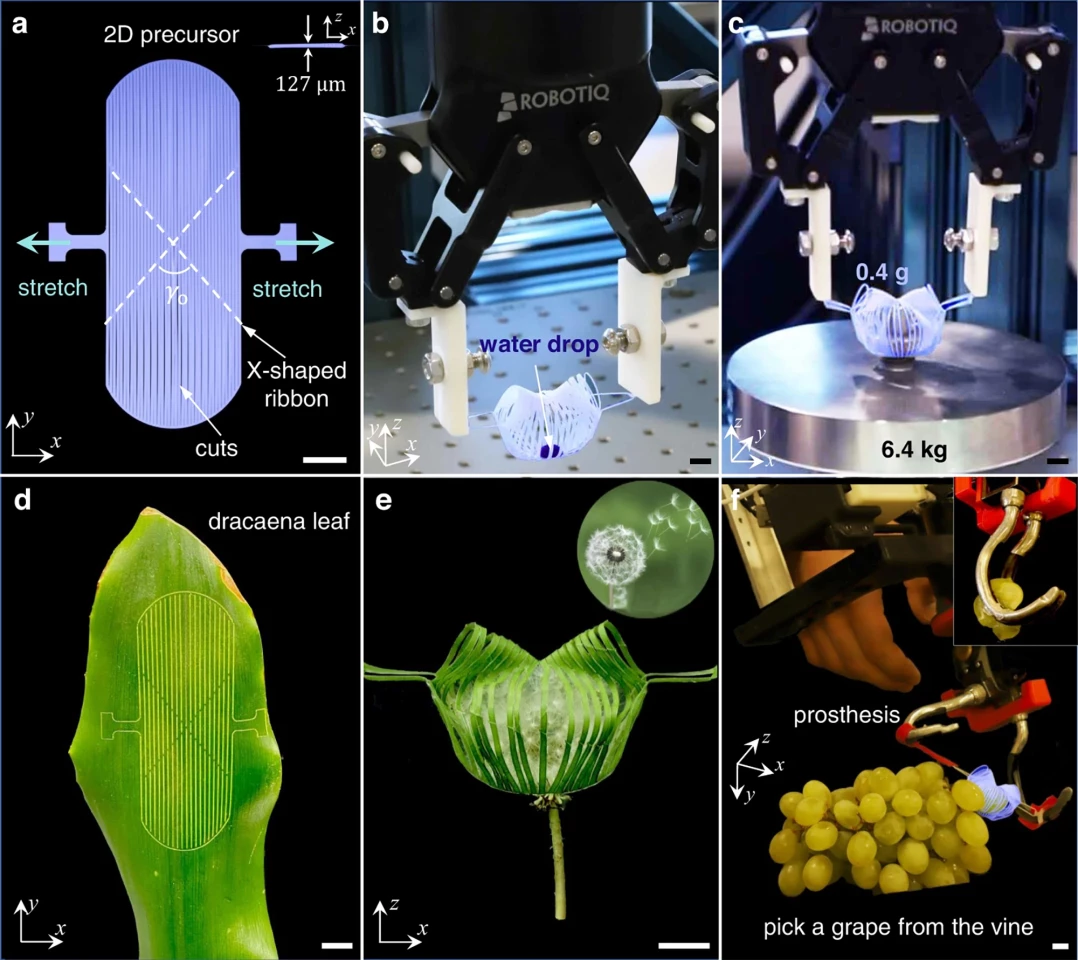Using a novel design inspired by the Japanese art of paper cutting, researchers have developed gentle yet strong robotic grippers that can fold clothes, grasp a drop of water and ultrathin microfibers, lift 16,000 times their own weight, and turn the pages of a book. The device has a wide range of potential applications, from prosthetics to minimally invasive surgery and deep-sea exploration.
We’ve seen a spate of robotic grippers of late, including grippers that operate without electricity, are inspired by flowers, or sport wooden ‘fingers’. But, researchers from North Carolina State (NC State) University may have just developed next-level robotic grippers.
“It’s difficult to develop a single, soft gripper that is capable of handling ultrasoft, ultrathin, and heavy objects, due to tradeoffs between strength, precision and gentleness,” said Jie Yin, corresponding author of the study. “Our design achieves an excellent balance of these characteristics.”
To be useful across a wide range of situations, the ideal gripper needs to be able to employ delicacy where required but also be capable of feats of strength and dexterity. To achieve these things, the researchers took inspiration from kirigami, the Japanese art of paper cutting.
In kirigami, closely related to origami, two-dimensional paper is folded and cut to form three-dimensional shapes. The researchers found that using a kirigami-inspired design afforded their gripper unique advantages.
“The strength of robotic grippers is generally measured in payload-to-weight ratio,” said Yin. “Our grippers weigh 0.4 grams and can lift up to 6.4 kilograms [14.1 lb]. That’s a payload-to-weight ratio of about 16,000. That is 2.5 times higher than the previous record for payload-to-weight ratio, which was 6,400. Combined with its characteristics of gentleness and precision, the strength of the grippers suggests a wide variety of applications.”
According to the researchers, these characteristics have more to do with the design of the grippers rather than what they’re made from.
“In practical terms, this means that you could fabricate the grippers out of biodegradable materials, such as sturdy plant leaves,” said Yaoye Hong, lead author of the study. “That could be particularly useful for applications where you would only want to use the grippers for a limited period of time, such as when handling food or biomedical materials. For example, we’ve demonstrated that the grippers can be used to handle sharp medical waste, such as needles.”
Speaking of applications, in proof-of-concept testing, the researchers integrated their grippers with a muscle-controlled (myoelectric) prosthetic hand, demonstrating that it could turn the pages of a book and pick grapes from a vine.

“This gripper enhanced function for tasks that are difficult to perform using existing prosthetic devices, such as zipping certain types of zippers, picking up a coin, and so on,” said study co-author He (Helen) Huang. “The new gripper can’t replace all of the functions of existing prosthetic hands, but it could be used to supplement those other functions. And one of the advantages of the kirigami grippers is that you would not need to replace or augment the existing motors used in robotic prosthetics. You could simply make use of the existing motor when utilizing the grippers.”
But the researchers believe that their novel grippers could be used for so much more.
“We think the gripper design has potential applications in fields ranging from robotic prosthetics and food processing to pharmaceutical and electronics manufacturing,” Yin said. “We are looking forward to working with industry partners to find ways to put the technology to use.”
The study was published in the journal Nature Communications and the below video shows the robotic gripper in action.
Source: NC State University






